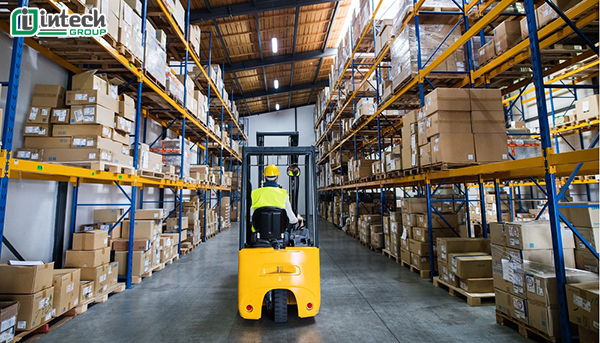What is Backorder? Improve warehouse management with Intech Group’s solution
14-10-2025 4
A backorder is a request from a retailer to a supplier or wholesaler to replenish stock of a product that is in short supply. This is a way for a retailer to fulfill customer orders even if the product is not currently available, ensuring that the customer will receive the product when it is replenished.
What is Backorder?
Backorder is an important term in inventory management, often appearing in the retail and manufacturing sectors. When a customer orders a product that is not available in stock, the order will be classified as Backorder. In this situation, the business still receives the order from the customer but cannot ship immediately due to lack of inventory. To meet the demand, the business must order from the supplier or carry out additional production to meet future demand.

What is Backorder Management?
Backorder management is the process of tracking and processing unfulfilled orders due to lack of inventory (Reference: Inventory Turnover). This activity includes recording the details of each Backorder, such as the product, quantity, expected delivery date, and customer contact information. In addition, Backorder management also involves regularly updating and informing customers about the order status so that they are aware of the delivery progress.
Closely managing backorders helps businesses ensure that orders are processed efficiently and on time, while minimizing the rate of order cancellations due to late deadlines, thereby enhancing reputation and maintaining customer relationships.

How does backorder work?
The Backorder process begins when a customer places an order for a product that is not available in stock. The warehouse management system records the order but cannot process it immediately due to lack of inventory. Once the order is recorded, the system will check the product status in stock. If the product is not available, the order will be marked as Backorder, and details about the product, quantity, and customer contact will be saved. The system will also set up a plan to fulfill the Backorder, including reordering from the supplier or scheduling additional production.
During this process, the business can continue to receive new orders for the product that is not available, based on the ability to process the Backorder in the future. When the product is replenished, the Backorder orders will be processed in the order they were ordered and the product will be shipped to the customer.
Main Causes of Backorder
Inaccurate Demand Forecast
Inaccurate forecasting can easily lead to a situation where the actual demand is not met. When businesses do not accurately predict demand levels, they may under-produce, leading to inventory shortages and backorders.
Lack of Safety Inventory
Not maintaining a large level of safety inventory can lead to shortages when demand spikes unexpectedly. Businesses will have difficulty fulfilling orders on time when they do not have enough inventory.

Supply Chain Issues
Supply chain issues such as supplier delays, shipping problems, or manufacturing difficulties can cause inventory shortages, leading to backorders. Instability in the supply chain can disrupt the supply process.
Technical Issues or Manufacturing Failures
Technical issues, such as machine breakdowns or errors in the manufacturing process, can reduce production output, leading to inventory shortages.
Ineffective Warehouse Management
Ineffective warehouse management is also a common cause. Without close monitoring of inventory levels, businesses may have difficulty determining when to place additional orders, leading to shortages.
The above causes can interact, causing backorders. To limit this risk, businesses need to deploy advanced technology strategies and solutions to optimize warehouse management.
Improve warehouse management with Intech Group's solution
Intech Module Warehouse - Intech's automated warehouse is an automated storage system that uses multi-tier racks and automatic shuttles. The system's smart warehouse management software coordinates shuttles, transferring trays from the input location to the storage location. The system scans the height of the trays to optimize storage space, with a distance of only 50mm between trays. The modular design allows the system to be flexible with different warehouse ceiling heights. Contact Intech Group now for advice on Vietnam's leading smart warehouse management solution.
References:

